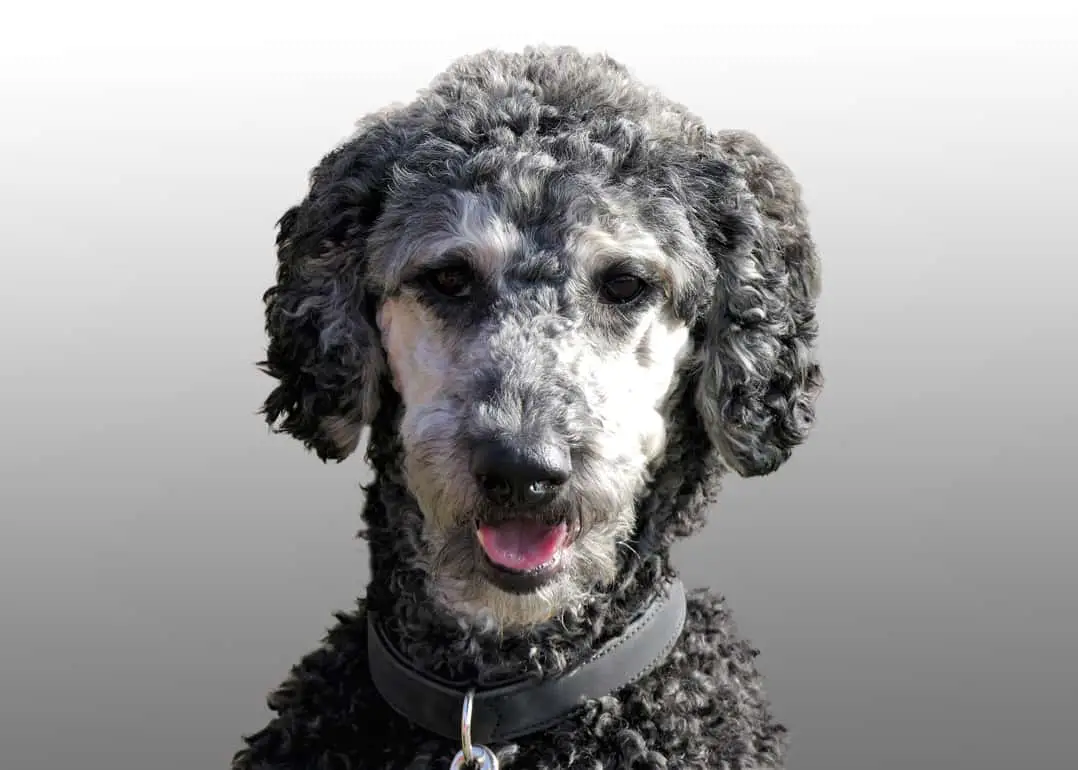This Is Why Your Labradoodle Puppy Is Going Grey
Your labradoodle puppy was either black or chocolate brown when you added the new family member, and now he or she seems to be changing color. The fur is getting paler and is shot with white or silver, changing your puppy’s appearance completely. What’s going on?
Why is my labradoodle puppy going grey? Labradoodles are notorious for having their color change or fade as they get older and “blow” their puppy coat. The genetic influence of the poodle tends to fade the coat to a lighter shade as the puppy matures. Since the root of the coat hair is lighter in shade at this stage, even clipping your puppy’s coat can cause a dramatic change in appearance.
When you get a Doodle puppy it is very rare that you know exactly what color coat you will get, but you will always love whatever you end up with!
Coat color is, of course, affected by parentage, and the colors can range from a single, even color to a wide multi-colored fur. Did you know that the colors can skip a generation or two? The grandparents and great-grandparents can have an effect on the final mature coat pigmentation.
There is also the recessive “dilute” gene that can come into play. Most of the time when dog owners contact the breeder asking why the color has gone off the rails, they often get the answer, “It might be because of a dilute gene”.
What Is The Dilute Gene In Dogs?
As mentioned earlier, coat color is determined genetically and there are several genes that are involved. Genes occur in pairs, one gene being contributed by each parent. This combination of genes will have some being dominant and some being recessive. The combination of the two determines what color the dog will be.
Taking the Labrador Retriever as an example, colors that can occur are yellow, chocolate, or black. The primary genetic pairs involved are the “B” and “E” genes. Each parent will pass on a dominant (“B” or “E”) gene or a recessive (“b” or “e”) gene. The “B” gene determines the coat color of black or chocolate, while the “E” gene is responsible for a yellow coat color.
If the offspring inherits a dominant “B” gene from either parent, it’s coat will be black. If two recessive “b” (“bb”) are inherited, the coat will be chocolate.
The “E” gene, though, will only determine a yellow color if two recessive “e” (“ee”) genes are inherited from the parents.
Enter the gene known as the “D” or Melanophilin (MPH) gene. This gene will only cause a dilute coat when the puppy inherits two recessive “d” (“dd”) genes. The parent can carry this recessive gene as a “Dd” or non-dilute, so a puppy can be born dilute from two non-dilute parents.
A dilute coat does NOT lighten the base color of your puppy’s coat, but rather disperses the color along the hair shaft, making the overall perception of the coat lighter. A black coat will appear charcoal, chocolate will appear silvery, and yellow will appear light gold or champagne.
Further information may be found at the UC Davis Veterinary Medicine site.
What Is Kemp Hair?
Kemp hairs, when they appear, are usually found in a fleece-type coat of the labradoodle.
If the white hairs you find scattered throughout the coat are a lot more coarse than the normal ones, it could be ‘kemp’ hairs. The hair has a hollow middle and a comparatively thin outer layer so that it is quite brittle and breaks easily.
Usually, kemp hairs appear in mature Labradoodles around the eyes and along the spine but have been known to appear in puppies as young as 4 or 5 months old.
Other Causes For Your Labradoodle Going Grey.
Stress or anxiety
Stress and anxiety can cause fur or hair to go white. Although the reasons are debatable, sometimes stress can cause the body to stop producing pigmentation as well as it used to.
Health Issues
Although rare, hypothyroidism is a condition that can cause your Labradoodle to start greying. This condition is a result of the thyroid gland underperforming. Getting treatment for this disease from your vet should reverse the greying.
There are a variety of liver and kidney diseases that can cause grey hair but are very rare. Always check with your vet if you suspect a health problem.


